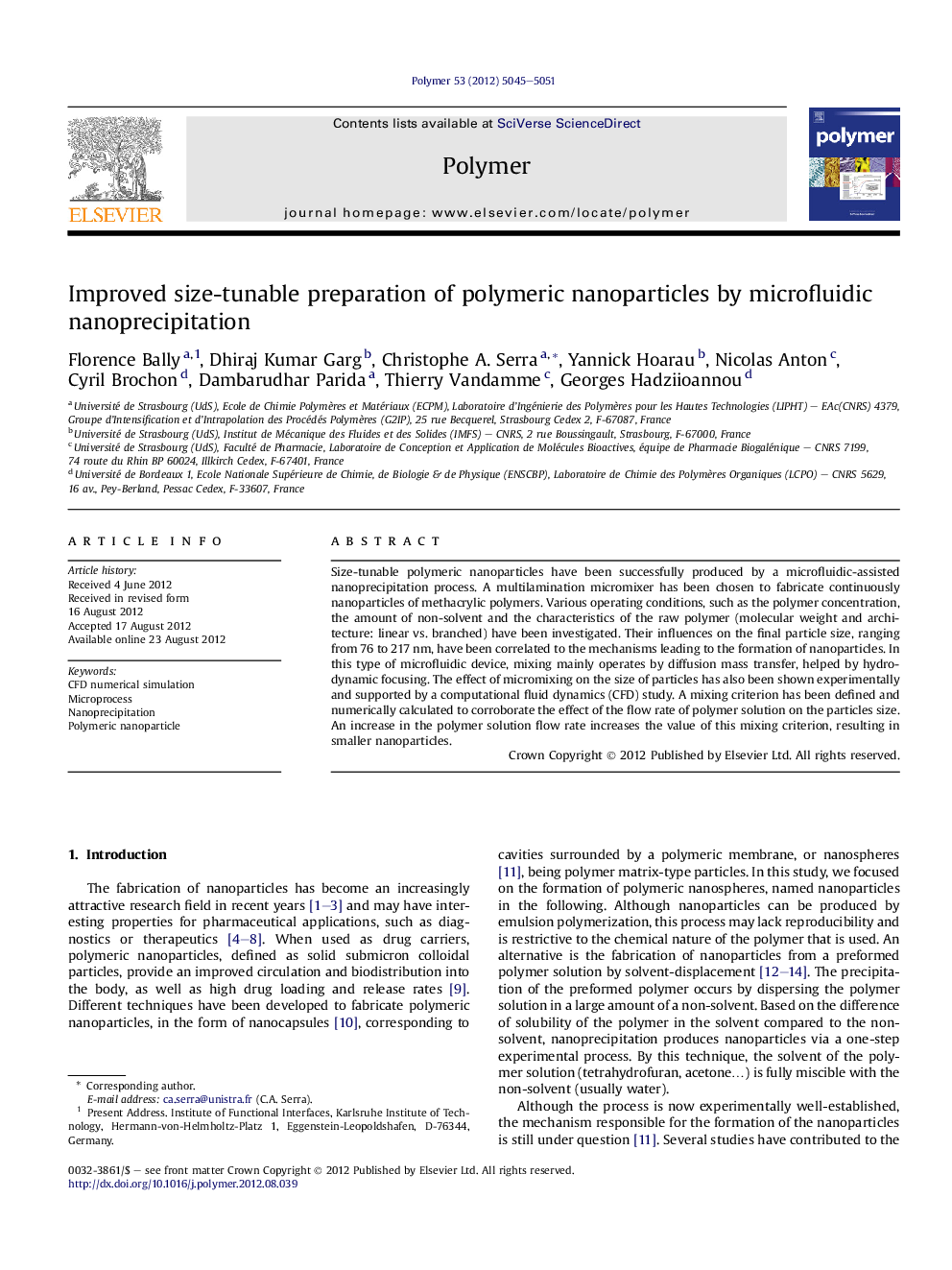| Article ID | Journal | Published Year | Pages | File Type |
|---|---|---|---|---|
| 5183265 | Polymer | 2012 | 7 Pages |
Size-tunable polymeric nanoparticles have been successfully produced by a microfluidic-assisted nanoprecipitation process. A multilamination micromixer has been chosen to fabricate continuously nanoparticles of methacrylic polymers. Various operating conditions, such as the polymer concentration, the amount of non-solvent and the characteristics of the raw polymer (molecular weight and architecture: linear vs. branched) have been investigated. Their influences on the final particle size, ranging from 76 to 217Â nm, have been correlated to the mechanisms leading to the formation of nanoparticles. In this type of microfluidic device, mixing mainly operates by diffusion mass transfer, helped by hydrodynamic focusing. The effect of micromixing on the size of particles has also been shown experimentally and supported by a computational fluid dynamics (CFD) study. A mixing criterion has been defined and numerically calculated to corroborate the effect of the flow rate of polymer solution on the particles size. An increase in the polymer solution flow rate increases the value of this mixing criterion, resulting in smaller nanoparticles.
Graphical abstractDownload full-size image
